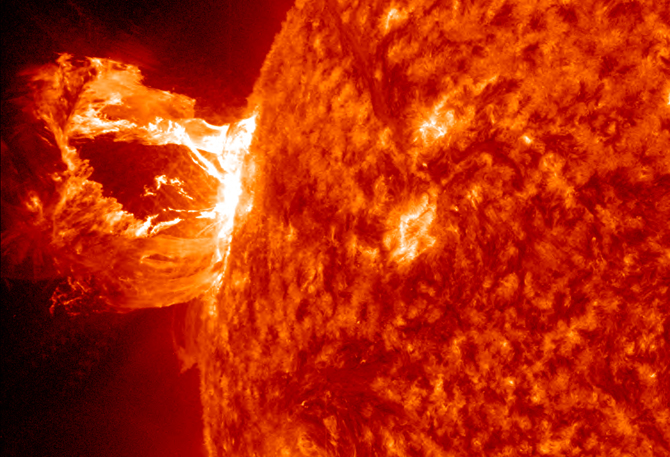Solar Flares

Solar Dynamics Observatory
Credit: NASA/SDO/AIA
The surface of the Sun is not all the same. There are bright areas, which are hotter than the rest of the surface, and dark areas which are colder. Dark patches on the surface of the Sun are called sunspots. Above the sunspots, the magnetic field of the Sun is tightly twisted. This twisting builds up energy until it can take no more. Then it unwinds suddenly. The energy released heats the material on the surface of the Sun to millions of degrees. This causes particles to erupt from the surface. The light related to it can cover all wavelengths. This is known as a solar flare and each can last minutes to hours. They travel at the speed of light which means we only see them at the same time they reach the Earth.
During a solar flare particles such as photons, electrons, and protons are released from the Sun. These particles have been heated by the Sun's atmosphere, giving them a lot of energy. The energy released in a solar flare is 10 million times more than the energy released in a volcanic eruption!
The particles in a solar flare are sent out into the Solar System. They can be dangerous if they are directed towards the Earth. The charged particles in the flares can damage satellites. The high energy photons (radiation) can pose a danger to astronauts in the International Space Station. This means that it is important that we watch the Sun and try to predict when solar flares could happen. If we can predict this 'space weather' we can try to prepare for it.

